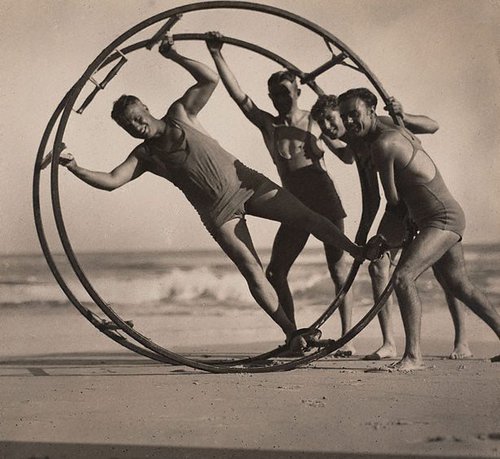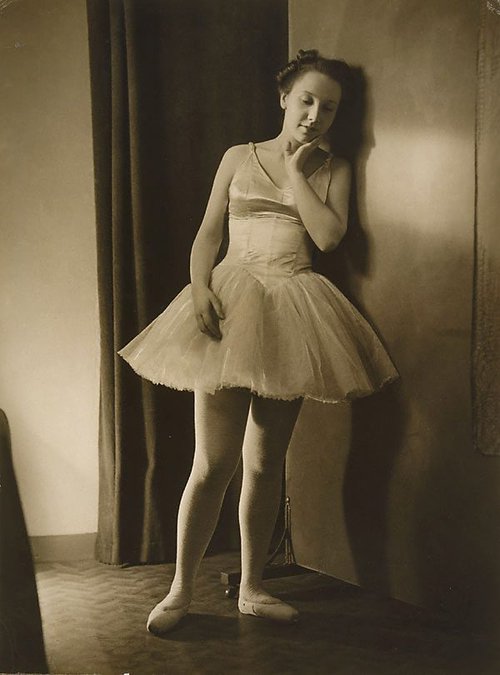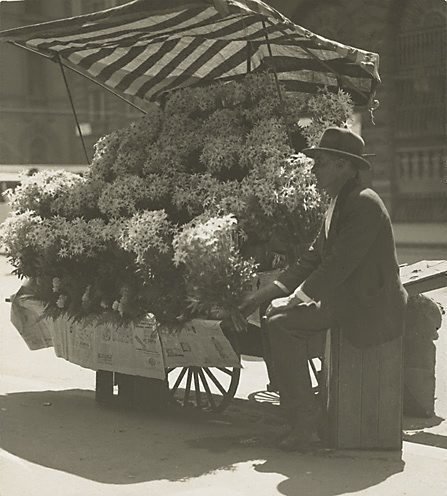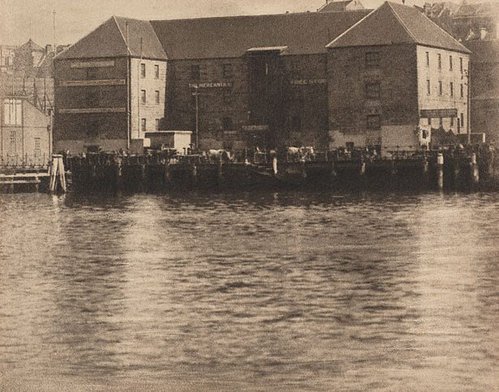Title
Flower sellers in Martin Place
1910
Artist
-
Details
- Date
- 1910
- Media category
- Photograph
- Materials used
- gelatin silver photograph
- Dimensions
- 16.9 x 28.7 cm image/sheet
- Signature & date
Not signed. Dated u.r. verso, pencil "1910".
- Credit
- Gift of the Cazneaux family 1975
- Location
- Not on display
- Accession number
- 104.1975
- Copyright
- Artist information
-
Harold Cazneaux
Works in the collection
- Share
-
-
About
Flower sellers in Martin Place belongs to a collection of images Cazneaux shot in and around Martin Place during changing conditions and at various times of day. Cazneaux was particularly drawn to luminosity of the city at the conclusion of a storm when the rain eased and the sun beamed down from behind the clouds. He wrote in his regular, anonymous column for the Sydney Mail, ‘At times the sun may break through the clouds and light up the middle distance and foreground…which renders the scene a real study in silver and grey’ 1. His devotion to carrying his Midge box camera to and from work at Freeman’s Photographic Studio, afforded him the possibility of capturing such fleeting moments of intense light 2. The rain lacquered pavement in this image simultaneously reflects the soft shadows of the flower stalls and illuminates the forms of the commuters and merchants.
Harold Cazneaux was born in Wellington, New Zealand in 1878. His parents, Pierce Mott Cazneau and Emma Florence (née Bentley) worked in commercial studios in New Zealand before returning to settle permanently in Adelaide during the early 1890s. At the age of 18 Cazneaux went to work alongside his father at Hammer & Co studio as a retoucher. He moved to Sydney in 1904 to join the larger portrait firm, Freeman’s quickly ascending to the position of ‘chief operator’ (as camera portraitists were known). Studio work was highly formulaic, with little scope for creativity. Cazneaux used his time walking to and from work to experiment with pictorialist aesthetics 3. The Photographic Society of New South Wales organised an exhibition of Cazneaux’s photographs in 1909, the first such solo exhibition of its kind in Australia. In 1916 he and fellow pictorialist photographer, Cecil Bostock founded the Sydney Camera Circle. The group was particularly interested in the how pictorialism could be adapted to and extended within an Australian context. The mechanised, standardised and frenetic pace of Freeman’s increasingly took its toll on Cazneaux’s creativity and health, and he resigned in 1917. He moved with his wife and daughters to the Sydney suburb of Roseville, and in 1920 he was employed as the official photographer for The Home magazine. This new position let him work in a varied indoor and outdoor environments. In 1938 Cazneaux was awarded an Honorary Fellow of the Royal Photographic Society of London. He continued to work until his death in 1953.
1. Cazneaux H (‘Reflex’) 1913, ‘Photography’, ‘The Sydney Mail’ 30 July p 54
2. Dupain M 1978, ‘Photographs by Harold Cazneaux, 1878-1953’, National Library of Australia, Canberra p xii
3. Newton G 1988, ‘Shades of Light: Photography and Australia 1839-1988’, Australian National Gallery, Canberra p 85 -
Bibliography
Referenced in 1 publication
-
Philip Geeves and Gael Newton, Philip Geeves presents Cazneaux's Sydney 1904-1934, Sydney, 1980, 58, 59 (illus.). plate no. 59
-




